#frau totenkinder
Explore tagged Tumblr posts
Text

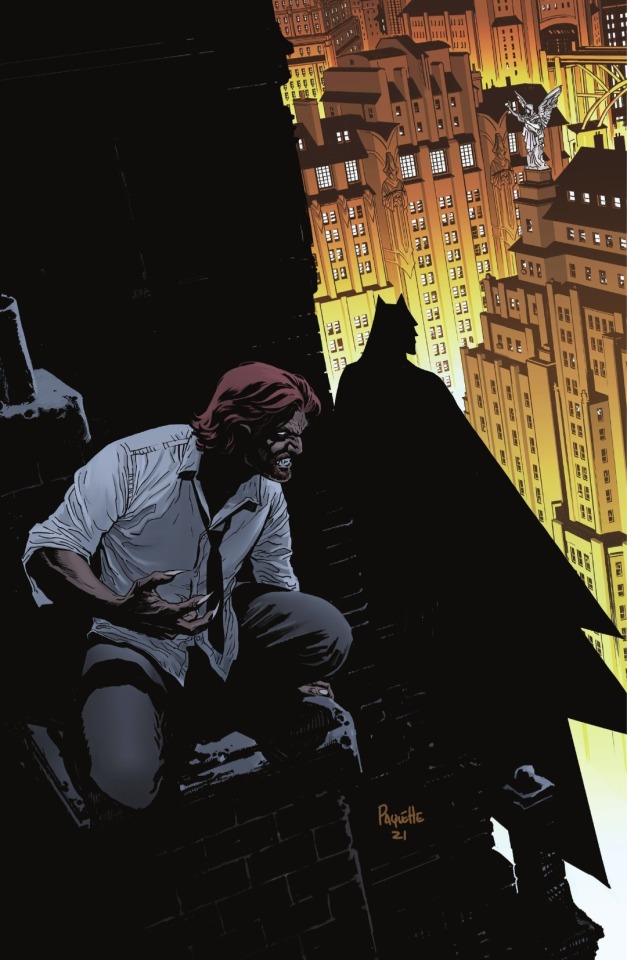
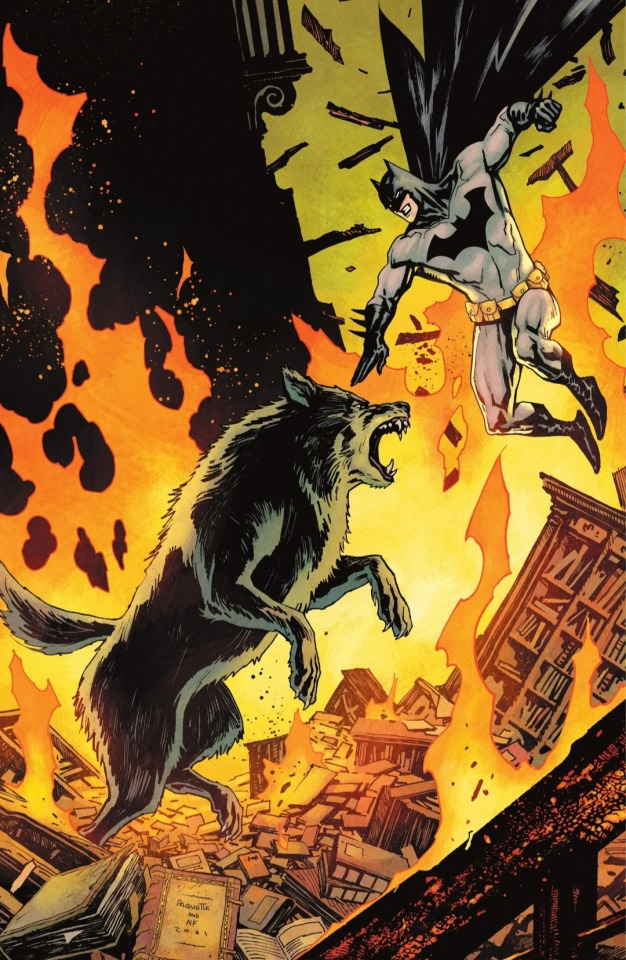
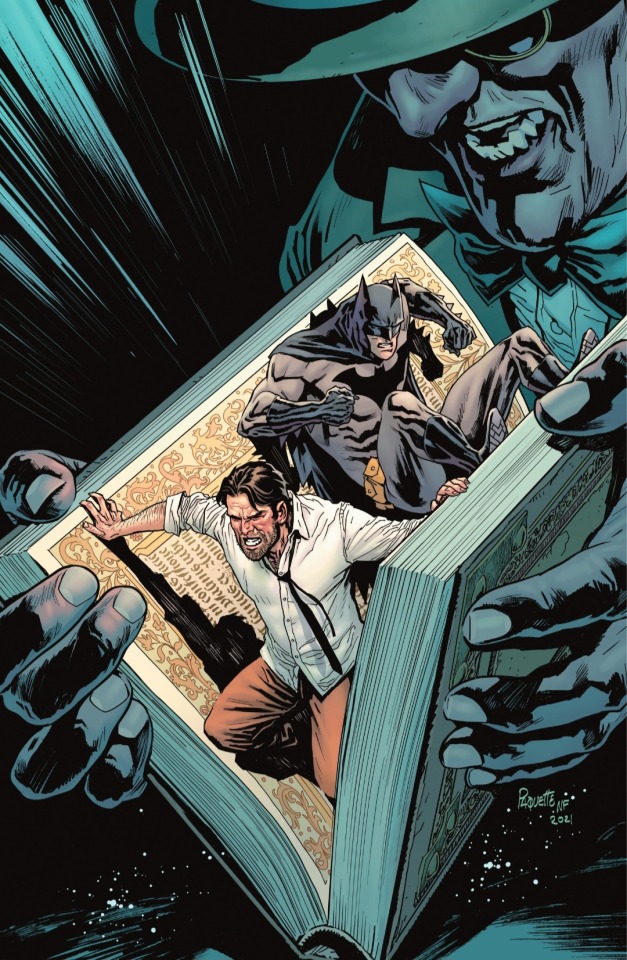
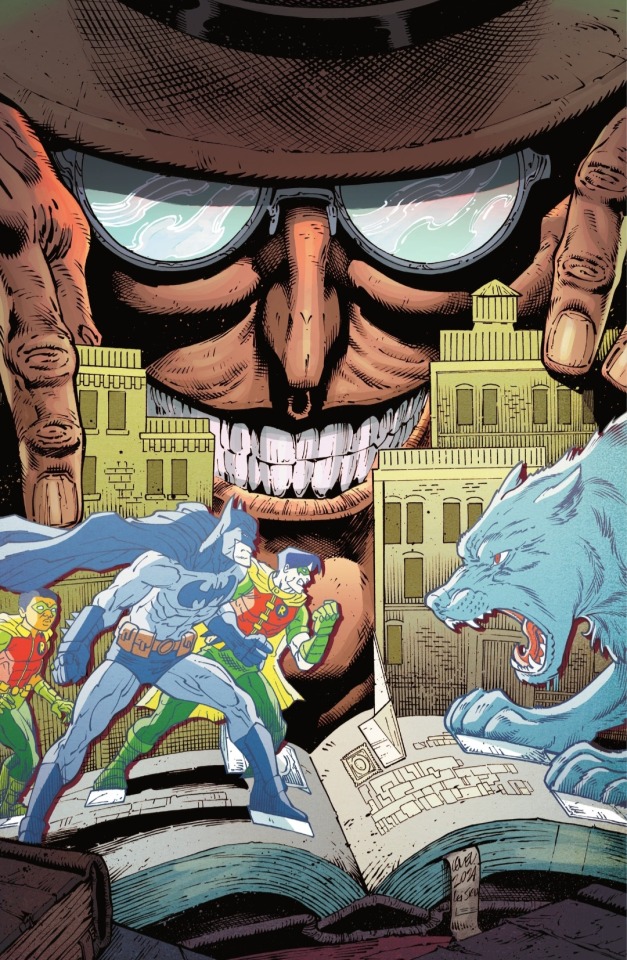
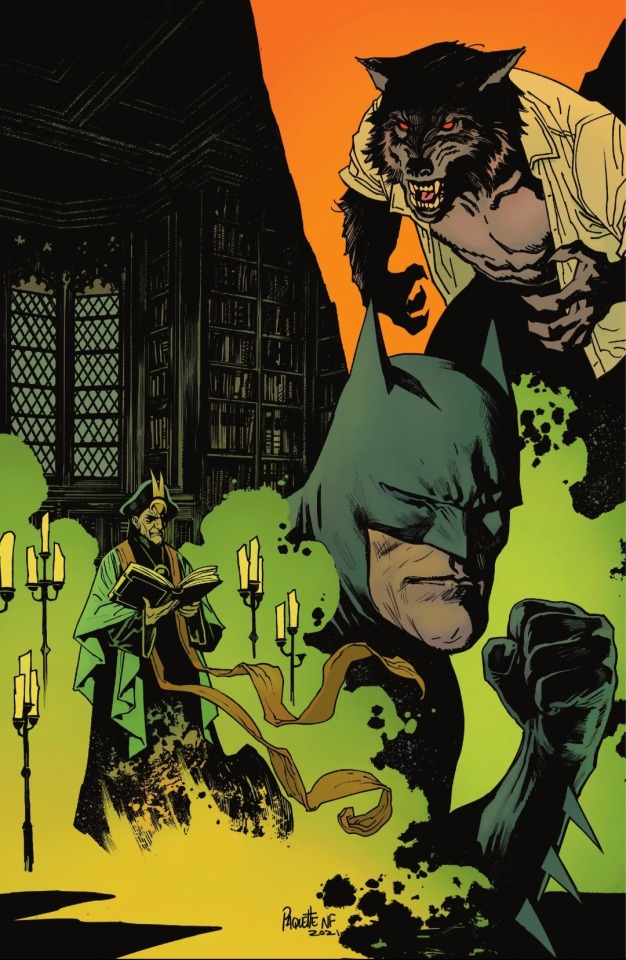


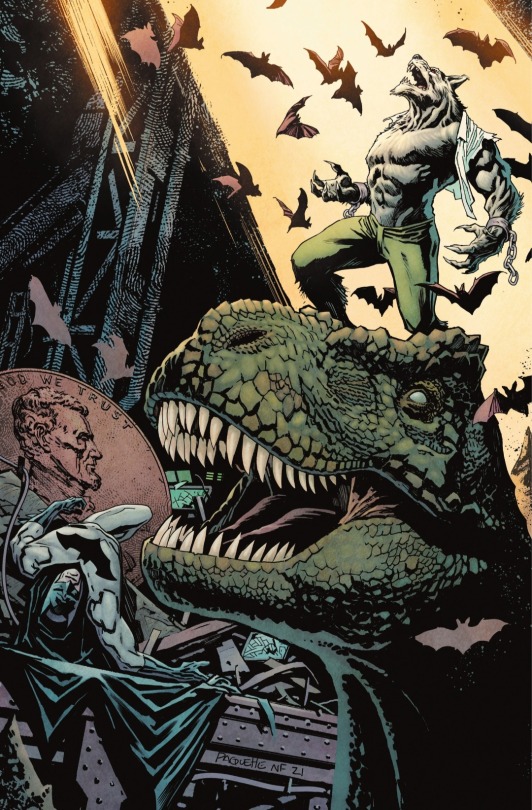

Batman Vs. Bigby! A Wolf In Gotham (2021).
#dc comics#dc vertigo#vertigo comics#fables comics#fables the wolf among us#batman#bruce wayne#bigby wolf#bigby#bookworm#frau totenkinder#dc robin#dc covers#dc art#dc gifs
48 notes
·
View notes
Text

Frau: My…Well, I’m afraid my service are at a premium then Bigby: Then name your price Frau: For a favour no questions asked, I would like request a certain way arrangement a gift of service from your deputy Frau wants something that only Keira is acceptable to her but not sure on Bigby. Bigby: I get her to agree and you’ll get what we want Bigby was wondering if Keira agrees, that she might be helping Frau more than him.

Frau: If it is within my power you need only ask Bigby was worried as he knows Frau want something from Deputy Keira Bigby: Let me back to you Bigby walked on as he knows its too risky, Frau realise Bigby was so worried to loose Keira but she thought he did the right thing.
#story#sheriff bigby#fabletown#telltale games#twau bigby#the wolf among us#vertigo comics#keira swan#deputy sheriff#the wolf among us bigby#twau 2#bigby wolf#Bigby fables#fables comics#fables comic#dc vertigo#telltale#telltale the wolf among us#bigby telltale#frau totenkinder#frau fables#fables rp#ask questions#telltale twau#fables bigby wolf#fables bigby#comic#swan of fabletown#deputy#sheriff of fabletown
6 notes
·
View notes
Text


Fables #63 by Bill Willingham and Mark Buckingham
1 note
·
View note
Text
Witches in fairytales: Melting pot
I have talked about famous witch characters or archetypes from fairytales, but fairytale media loves to unite, cross, mix-up or fracture our beloved stories in all sorts of ways. As a result, a same witch can pop up in different stories, or a new witch can be created out of different famous witchy archetypes... Here are some of these "multi-tasking" witches. I will also throw here some witches that do come from actual fairytales, but never became a full-on archetype.
Starting with two specific to French media, the Witch Godmother from "Garulfo" and Rowena from "Les flammes de la nuit".



Queen Narissa from Disney's Enchanted:


Frau Totenkinder from Fables:

The Mirror Queen from Gilliam's The Brothers Grimm:

The Evil Witch from Charmed:

The witch-queen of Stardust:


The witch sisters of Over the Garden Wall:


The witches of Michel Ocelot (Karaba from Kirikou, the witch from "Princes and princesses")


Granny Weatherwax, Magrat Garlick, Nanny Ogg, Lilith de Tempscire and Erzulie Gogol, from Discworld's Witches Abroad (and "Wyrd Sisters" before)





The witches of "Arabela"


The wicked witch from "Sabrina the Teenage Witch"

The other witches of the Grimm fairytales (the brothers Grimm have the largest number of witches per fairytale author, but outside of the iconic quatuor I evoked before, they rarely get more than a one-shot at adaptations. Here is a mix of "Grimm's Fairy Tales Classics" and "Seichs auf Einen Streich")





Natacha from "Nightbooks"

There are probably many more but I can't fit them all in here X)
22 notes
·
View notes
Text
This Day in X-Project - March 28
2015: Laurie texts Kyle inviting him to come play Dance Dance revolution with her after he is done being scolded. Laurie plans a Rocky Horror Picture Show weekend with Doug, Wade and Marie-Ange. Laurie meets Arthur in the medlabs. Clint texts Matt to arrange for dinner after he meets Barney. Looking for his brother Clint runs into Kitty at a seedy bar. Gabriel shares the new song he’s obsessed with to prove he’s not always sour. Rogue contacts Logan to catch him up on Vegas. Jean and Warren make up after their fight and he shows off his baking skills. Warren later tells everyone the result, a croquembouche is available in the kitchen. In Paris, Adrienne and Garrison comes across a car accident and help the woman driver, unaware that Rick Chalker, the last of the Chalker brothers, is unconscious in the back of the box truck involved, where he was planning to unleash his exo-suit against them; instead, he is only able to fly out of the truck before the suit loses power and he winds up at the bottom of the Seine.
2016: Miles celebrates his score on a practice test. Kevin continues to train Gabriel in the ways of espionage. Wade texts Cecilia asking to hang out. Laurie posts about the movie "Crimson Peak." Are We Ourselves: Coulson calls Clint to investigate disappearances in Alaska, sparking the following string of texts and emails; Clint texts Natasha to discuss; Clint invites Kyle and Molly to join him; Clint asks Matt to dogsit; Molly asks Topaz if she wants to come on Clint's trip; Clint emails Jennie to let her know about his whereabouts; Topaz texts Amanda to get her to catsit; Molly tells Wade she's going on a real mission; Wade texts Marie-Ange his feelings on this.
2017: Marie-Ange wants to hatewatch American Gods.
2018: Marie-Ange posts about a crystal ball frappuccino, and wanting one every other day.
2019: Sue suggests taking advantage of a warm weekend with a BBQ.
2020: 793.8.025.110.393: Daniel Drumm and Wong meet with Amanda and Topaz (with Marie-Ange and Doug as not-entirely-welcome guests), and explain that the London Sanctum has locked them out; Amanda and Topaz play nice with the Sanctum/Library to get inside; the group pairs off in various ways to use their skills and restore the library, while also running across various fictional characters; in return for their help, the library decides to offer a little advice to the group about their various issues in the form of more strange avatars - Marie-Ange gets Frau Totenkinder (of Fables), Doug gets John Constantine, Topaz gets Magdaleana Brooks (a British Fae Librarian), and Amanda gets the first woman of the British isles condemned for witchcraft; with things finally restored to a somewhat normal state, the group takes their happy leave, all agreeing that Doug still gets to be dunked in cold water.
2021:
2022:
2023: Madin makes a journal entry about returning the car and asking what’s happened while they were away. Terry drops in to watch Kyle fight and makes some unsettling discoveries... discussions are had. Quentin and Gabriel catch up on the roof after the powers swap and possibly share more than they intended. In New York, Alex takes Madin out for a meal and Madin starts to think staying at the mansion may not be entirely terrible.
0 notes
Text
I started reading the fables comics and theres a character named Frau Totenkinder in there which is obviously supposed to be a german name ("Frau" in front of a last name is like Mrs) but i cant figure out what they THOUGHT totenkinder meant . Kinder = children, and tot = dead, (die) toten = the dead, but not like. That. Totenkinder doesnt mean the dead children, at best it means children of the dead, but given that shes the gingerbread house witch, i dont think thats what they meant, i think her last name is supposed to mean kills children or children-killer but like why didnt they find SOME german to ask .. it wouldve had to be kindertöter or tötetkinder . Both of which sound silly in german but so does totenkinder . Same with when they said Allerleirauh means "every kind of fur" i mean, TECHNICALLY it does, but no one would ever say that like that anymore....
#Im not like saying this as an issue btw i think its funny#and the Comics are pretty good apart from like random moments where its super clear the author is using bigby to like say some random#political/societal message that is NOT packaged well enough to like. not take you out of the story and make you wonder why bigby would#feel so strongky about it to bring it into an unrelated conversation ..
1 note
·
View note
Photo

Fables #1: Im tiefen dunklen Wald von Bill Willingham ist die langersehnte Fortsetzung des Vertigo Hits. Auch nach der großen Schlacht zwischen Frau Totenkinder und Cinderella ist kein Happy End in Sicht. Ein*e neue*r Gegner*in taucht auf und sie*er will sich an Geppetto für das Chaos rächen, das in Manhattan angerichtet wurde. In der Notaufnahme eines New Yorker Krankenhauses kehrt eine längst tot geglaubte Fable zurück!
#Bigby Wolf#Bill Willingham#DC Comics#Fables#Gepetto#Jack in the Green#Märchen#Mark Buckingham#Panini Comics#Schneewittchen#Comics
0 notes
Note
Oh but she can't have an abortion because that is EVIL!!!11111 Anyone else recall that little nugget of fact that let us know that Frau Totenkinder is like super evil still?
wait please tell about the time willingham said he wanted to shoot you. i didn't know anything about the guy let alone that he. threatened to shoot people.
To be fair, not me personally - he doesn't know who I am, afaik. But a group I belonged to.
So 19 years ago, Willingham wrote the comic in which Stephanie Brown was killed off. This comic, combined with the widespread fridging of and disdain for female characters that was rampant in the industry at the time, and DC's absolute refusal to give Steph a memorial case like Jason's because "she wasn't really Robin," sparked a lot of feminist pushback. (To be clear, women have always read comics and there has always been feminist activism in the industry, but at that particular moment in time, it coalesced around Steph.) This made DC and Willingham very, very angry.
Anyway, while on a panel at a con, Willingham said that he "wanted to take a gun to all those girls who kept asking about a memorial case." Because you know, when people are protesting the rampant violence against female characters in comics, what we need is violent rhetoric against women coming from high profile writers. And since I was literally on the board of a feminist nonprofit named after Steph at the time, I took it rather personally.
999 notes
·
View notes
Text
Review: Batman vs Bigby! A Wolf in Gotham #6 (Final Issue)
Review: Batman vs Bigby! A Wolf in Gotham #6 (Final Issue)
Review: Batman vs Bigby! A Wolf in Gotham #6 (Final Issue)[Editor’s Note: This review may contain spoilers] Writer: Bill WillinghamArt: Brian Level, Jay Leisten and Anthony Fowler, JrColors: Lee LoughridgeLetters: Steve Wands Reviewed by: Matthew B. Lloyd Summary Bookworm revealed as Batman, Bigby and Cinderella must stop Frau Totenkinder before anyone else dies! Positives The first thing…

View On WordPress
#Anthony Fowler Jr.#Batman#bigby#bigby wolf#bill willingham#Bookworm#Brian Level#Cinderella#DC Comics#DC comics news#fables#Frau Totenkinder#jay leisten#Lee Loughridge#Mrs. Stacks#Steve Wands
14 notes
·
View notes
Photo

Fables: Arabian Nights (and Days), by James Jean.
7 notes
·
View notes
Text

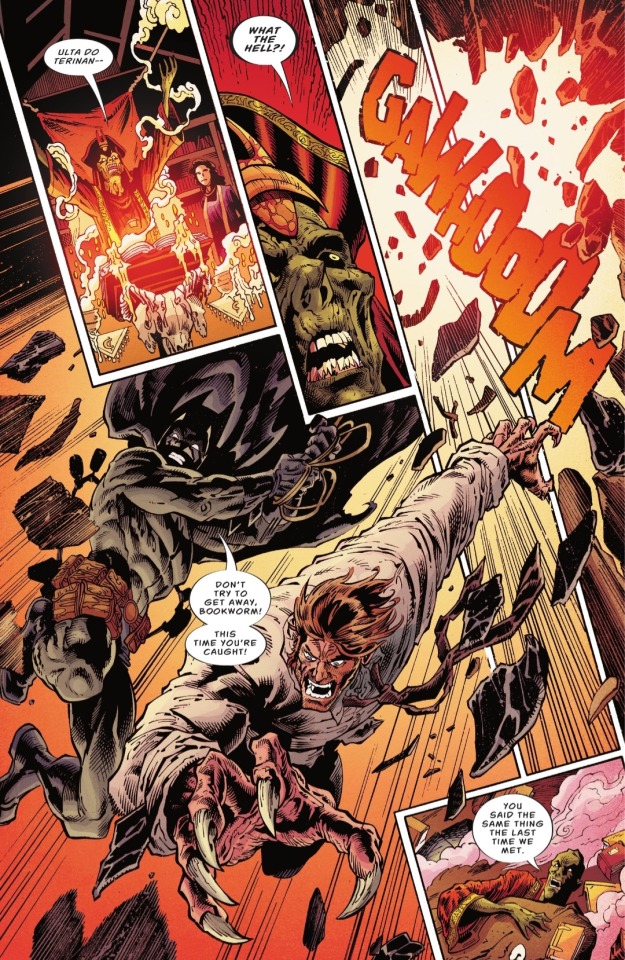






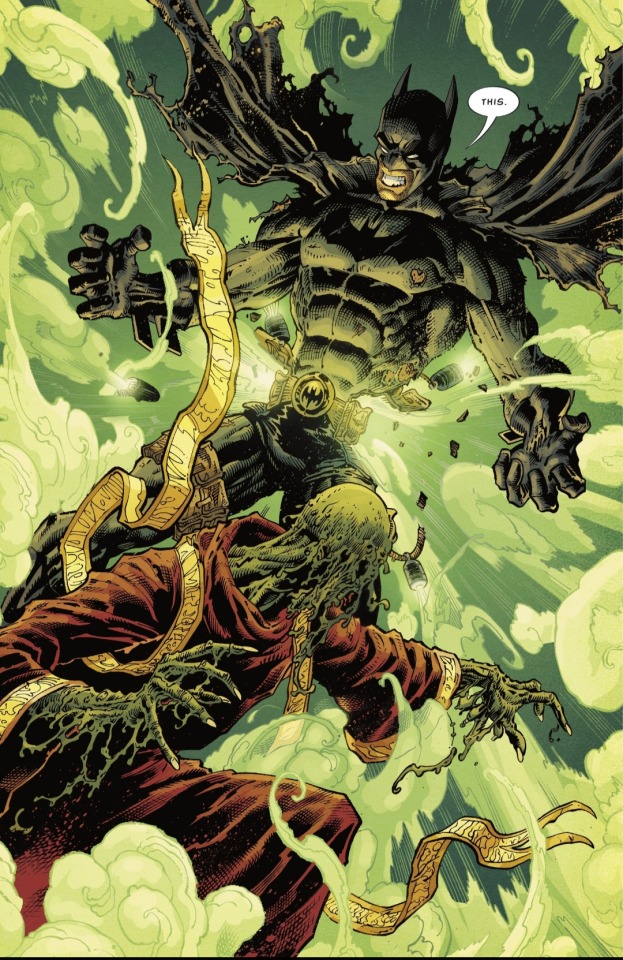

"I'm Robin the Boy Wonder. -Whereas I'm Robin, the even more wondruos Girl Wonder. And you're nicked. -Nicked? -What can I say? I'm a fan of british cop patois."
Batman Vs. Bigby! A Wolf In Gotham (2021). "Chapter Six: Wild Animals."
#dc comics#dc vertigo#vertigo comics#fables comics#fables the wolf among us#batman#bruce wayne#roberto#stephanie brown#dc robin#robins#bigby#bigby wolf#bookworm#frau totenkinder#mr stack#grendel's mother#dc universe#dc magic
28 notes
·
View notes
Text
Plot 1:- How did Bigby and Keira became Protectors? (Time set: 1600's) Keira Swan had just became a human for few months and now she about to go school with Bigby. Bigby and Keira must learn to work together, but a new path brings them? (How Bigby and Keira become Sheriff and Deputy Sheriff)
Plot 2:- Bigby and Keira going to Japan? (Time Set: Present) Keira went to get her haircut, there she encounter Rapunzel, all the sudden paper origami birds came with a message for Rapunzel, instant want to go Japan. But Snow won't allow, but did Rapunzel listen & what does Frau Totenkinder know this? (A Case)
14 notes
·
View notes
Text

Fables #60 by Bill Willingham and Mark Buckingham
0 notes
Text
The Ultimate Fables Catalogue (C)
I know, I know, I haven’t released part “B” yet. But as it turns out, I finished the part C long before the part B, so I will release this one first.
In this continuation of the “Ultimate Fables Catalogue”, I will cover a part of the spin-offs. To be precise I will take a look at the two Cinderella spin-offs (Cinderella: From Fabletown, with love ; and its sequel Cinderella: Fables are Forever), and the entirety of the Fairest series (including its graphic novel, Fairest: In All the Land).
SPOILERS AHEAD! SPOILERS AHEAD!
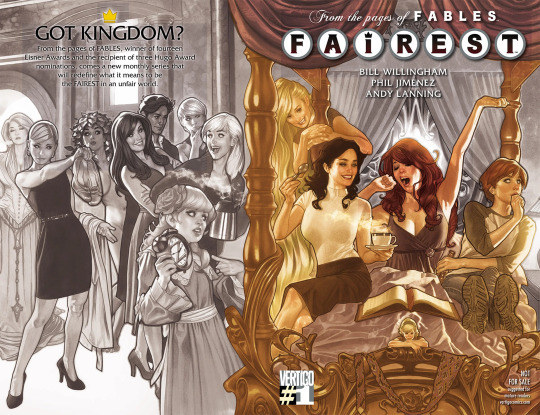
The Cinderella spin-offs
Cinderella: From Fabletown, with love
# The title of the series is an homage to the James Bond novel “From Russia, with love”. Cinderella’s own adventures as Fabletown’s spy evoke those of James Bond and of the Bond girls. The writer of this series, Chris Roberson, evoked the two main influences of the plot by describing the comic as “On Her Majesty’s Secret Service meets Sex and the City”.
# Crispin Cordwainer is the shoemaker from the Grimm fairytale “The Elves and the Shoemaker”. His name comes from saint Crispin, patron of cobblers and leather-workers.
# Cinderella mentions “an ogre and a talking cat”, referencing Charles Perrault’s “Puss in Boots”.
# Among the magical items found among the Mundies, Beast mentions the “seven-league boots” (from Charles Perrault’s Little Thumbling), a “horn of plenty” (the Cornucopia), a magical flute (I don’t have any specific reference for this one) and a “singing sword” (I don’t have any clear reference, though the “singing sword” concept appears here and there - it is the name of an Arthurian novel by Jack Whyte, and an episode of the cartoon “The Legend of Prince Valiant”, among many other things).
# The silhouette of the tourists are seen, and while we already know of Mowgli and Cinderella, we will discover the other two to be Feathertop (see later) and the... what was originally planned to be the Huntsman and then became a Woodsman apparently (it is one of those unclear points). Cinderella in turn has her group of three spies: Puss in Boots (who likes to be known as the “Marquis of Carabas”), from Charles Perrault’s fairytale of the same name ; Dickory, the mouse that ran up the clock, from the nursery rhyme Hickory Dickory Dock, and finally Jenny Wren, whose lover Robin Redbreast was murdered - from the cycle of nursery rhymes surrounding Cock Robin (”Cock Robin Got Up Early ; Who killed Cock Robin? ; Jenny Wren Fell Sick).
# Aladdin, and the djinn of the ring, are both from the “Aladdin” story of the One Thousand and One Nights. I suspect his driver, Farid, to be the prince Farid from the One Thousand and One Nights story “Farizad of the Rose’s Smile” - given it is the only Farid character in the Arabian Nights I know of.
# The ghuls are creatures of Arabian folklore.
# Ultima Thule (named after the legendary island of Thule that cartographers of Antiquity believed to exist north of England) is the realm of Scandinavian fairytales, especially Norwegian, filled with trolls and talking polar bears and giant elks. Its former ruler was king Valemon, from the fairytale “White-Bear-King-Valemon”. Other inhabitants of Thule include the widow Gudbrand (wife of Gudbrand from “Gudbrand on the Hill-Side”), Askelädden (the famous Norwegian folktale character known as “Ashlad” in English), Little Freddy (from “Little Freddy with his fiddle”), Little Annie the goose-girl (from the fairytale of the same name), Butterball (from the Norwegian fairytale of the same name), as well as the ram and the pig, from “The Ram and the Pig who went to live in the woods by themselves”.
# The Fairy Godmother is here another “archetype character” in the likes of Frau Totenkinder, Prince Charming or Jack of All Tales. She was the fairy godmother of Cinderella, but also alongside her sisters the “good fairies” of the Briar Rose/Sleeping Beauty fairytale, and she secretly worked to help Rapunzel by sending the prince rescue her. The Fairy Godmother’s perpetual fight against Frau Totenkinder has notably been the source of numerous of the fairytales: it seems to have started out by Frau Totenkinder “ruining” the fate of Briar Rose by playing the role of the “wicked fairy/angered wise woman” in the tale, only for the Fairy Godmother to retaliate by sending the prince of Rapunzel (whose witch-adoptive motive was Frau Totenkinder). The evolution of her role throughout the fairy tales is also explained by this perpetual duel: after sending Prince Charming to save Briar Rose from Frau Totenkinder’s curse, the witch fought back by killing the Fairy Godmother’s two sisters with poisoned apples (evoking Snow-White), which is why she was alone when helping Cinderella ; and the reason her spells only last to midnight is because her powers were weakened due to her actions in the Rapunzel story, all of her efforts exhausting her spells so that they could only work for a day and no more. It is also confirmed that the prince of Rapunzel is NOT prince Charming, as the Fairy Godmother “reused” the same prince to save both Briar Rose and Cinderella.
The Fairy Godmother is also very clearly an homage, or rather a dark parody, of the fairy godmothers of Disney movies. Her being part of a trio of benevolent fairies looking like little grandmothers at the times of Briar Rose’s birth is a nod to Fauna, Flora and Merryweather, the three fairy godmothers of Disney’s Sleeping Beauty, while her being the kind, elderly, grey-haired, plump godmother of Cinderella is an obvious nod to Disney’s interpretation of the fairy godmother of Cinderella.
# The palace being made of glass is of course a nod to the glass slippers of “Cinderella”, but I wonder if it isn’t a reference to the Norwegian fairytale “The Princess on the Glass-Hill”, or something similar...
Cinderella: Fables Are Forever
# The title of the series is again a James Bond reference, this time to “Diamonds are forever”.
# The “Shadow Fabletown”, the Soviet community of Fables living beyond the Iron Curtain and opposing the American Fabletown, is composed of Ivan Durak (Ivan the Fool, a folk character of Russian fairytales), Tugarin Zmeyevich (the Slavic character known as Tugarin or Zmey Tugarin), Meng Chiang-Nu (the character of the Chinese folktale Lady Meng Jiang), the Seven Chinese Brothers (see below), and Anansi the spider (a folkloric character from West African tales and legends)
About Tugarin Zmeyevich, the Fables Encyclopedia explains a bit more the process behind choosing this character that turns into a dragon: they explain Tugarin Zmeyevich started out as the antagonist of a folktale where he was opposed to the Rusian folkloric hero Alyosha Popovich - and in the oldest/”first” version of this folktale Tugarin Zmeyevich was “merely” a man as tall as a giant, riding a horse that had fire coming out of its nostrils and smoke from its ears. However, throughout adaptations and expansions of the tale, Zmeyevich inherited the “breathe fire and smoke” traits of his horse, and then from a fire-breathing man became a dragon. So, for the Fables comics, they decided to have Zmeyevich look like a man at first, but be able to turn into a dragon at will.
As for the Seven Chinese Brothers, the Fables Encyclopedia also brings more information: they are actually part of a popular Chinese folktale merely known as “The Five Brothers” - which became well-known in the West thanks to Claire Huchet Bishop’s “Five Chinese Brothers” in the 30s ; but there are several variations of the story where the number of brothers change, up to seven or ten. And the idea of the five brothers being actually seven was also popularized in the English-speaking world thanks to Margaret Mahy’s “Seven Chinese Brothers” at the end of the 19th century.
# Dorothy Gale, aka “Silverslipper” is from “The Wonderful Wizard of Oz”, by L. Frank Baum. Beyond her first nickname (evoking the magical “silver slippers” of the book), she is also called “The wicked bitch of the east” (a nod to the Wicked Witch of the East from the book). Numerous other characters and entities from the Oz books appear: the Tin Woodman and the Cowardly Lion (from “The Wonderful Wizard of Oz”), the Chiss, Bungle the Glass Cat (”The Patchwork Girl of Oz”) and the Spoon Brigade (”The Emerald City of Oz”). We also see in the flashbacks all four witches of Oz (Good witches of the North and South, Wicked witches of the East and West), alongside the Munchkins and the Scarecrow.
# Other pop culture references include the line “Cheshire cat got your tongue” (referencing “Alice in Wonderland”), “Are you done quoting Donny and Marie?” (the television series of the same name) and Cindy describing the relationship of Bigby and Snow White as “That whole Cheers things”, paralleling the couple with the characters of Sam and Diane from the “Cheers” show
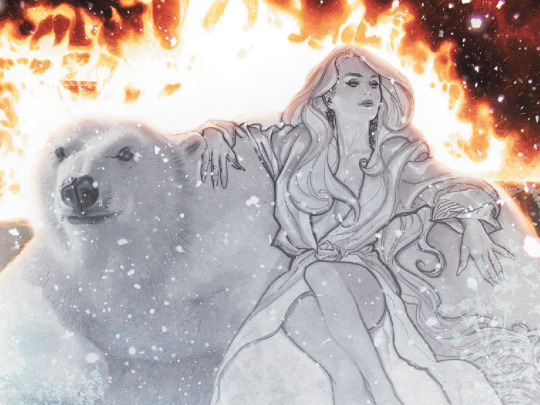
FAIREST
Wide Awake
# The main character is Ali Baba, from the One Thousand and One Nights story “Ali Baba and the Forty Thieves”. Morgiana of the same story is briefly mentionned in flashbacks. Interestingly, in the Fables universe Ali Baba went from a thief killer to the “prince of thieves” himself, something pointed out as weird in-universe. I believe it is a reference to how in American culture at the time of the comic’s release, the name of Ali Baba was so strongly associated with thieves you often saw it being reused for a thief character.
# The many modern USA culture references made by the Bottle Imp are too many for me to record them all.
# The fact of having the two “Sleeping Beauties” be a red-clad Briar Rose and the white Snow Queen isn’t just some fancy aesthetic choice. This plays on a common duality in fairytales between white and red that the comics itself already illustrated throughout the duo of Snow-White and Rose-Red. More interestingly, Ali Baba describing one as “the color of winter snow” and the other with “the color and heat of the first days of autumn” seems to be a play on the “seasonal” reading of the fairytale “Sleeping Beauty”, this analysis and belief that the fairytale actually depicts a metaphor for the cycle of seasons, Sleeping Beauty herself embodying nature falling asleep during the winter, and her awakening symbolizing spring.
# The version of Sleeping Beauty’s backstory here is quite interesting because it clashes with the one presented by the Cinderella spin-offs - a “retcon” here that is present inside the main series itself, since it began with the implications that Frau Totenkinder was the one who cast the curse, being the “evil witch” against the “three good fairies” (a la Disney), but then switched to make this new backstory canon. In this version of the story, we are more faithful to Charles Perrault’s version of the tale, since we have seven fairies gifting the child and the evil fairy being the eighth. The fairies here are actually a mix between the actual “fairytale fairies”, as in French fairytale fairies, and British fairies of folklore and legends. The seven gifts here are as such: beauty (for Katrya the Pure), wit (for Sofiya the wise - though it is the “wit of an angel”, so it is actually naivity), elegance/grace for Nyura the Graceful (which is extended to being graceful and elegant in all things... including the bedroom), walth for Ionna the Gifted, the talent of singing for Alyas the Noble (though it is “singing like a nightingale”, quite literaly, so singing like a bird), the talent of writing good songs and playing music perfectly for Yeva the Lively. The last gift of not dying but falling into an eternal sleep is given by Leysa the Defender against the curse of the evil fairy, Hadeon the Destroyer - and here, as with all magic process, we receive an explanation for the why: as it turns out, Leysa could only “split” the death curse across so many people the death became a “mere” endless sleep.
Beyond this, each of the fairy embodies a specific concept associated with fairies in general, or magic beings. Katrya the Pure is focused on purity and chastity (since her magical waters heal all knights chaste and noble) ; Sofiya the Wise is noted to have written a very famous grimoire ; Ionna the Gifted represents the “benevolent” fairies associated with darkness, since she is a daughter of the night who tames and traps nightmares (as opposed to Hadeon the Destroyer who is an “evil” fairy of darkness, shadow and fogs that rules over a typical “evil, nightmarish forest”), Yeva is strongly associated with music, merriment and parties, etc... The habit of Hadeon of turning her former lovers into objects she uses later (like into a boat) is also a very typical trope of fairy tales.
# In a flashback, Ali Baba is seen stealing from Abd al Quadir. He is a character from the One Thousand and One Nights story “Ala al-Din Abu al-Samat” (253rd night).
Lamia
# Lamia is of course the legendary monster/bogey-woman of Greco-Roman culture.
# Saint George, his sword Ascalon and the village of Silene are from the legend of “Saint George and the Dragon”. Saint George seems to embody here the archetype of the “dragon slayer-hero” since he lists other famous dragons among his list of kills: the Chimaera (not an actual dragon, but the fire-breathing Chimera of Greek mythology, killed by the hero Bellerophon), Illuyanka (a Hittite dragon killed by the god Tarhunz), Tiamat (the Mesopotamian goddess-dragon killed by Marduk) and finally Vritra (the Indian reptilian demon slain by the god Indra).
# When Beast lists the various fictional characters he becomes “like” during his various hunts for the Lamia, he mentions in order Auguste Dupin (created by Edgar Allan Poe), Sherlock Holmes (created by Arthur Conan Dole), Hercule Poirot (created by Agatha Christie), Sam Spade (from “The Maltese Falcon”) and Philip Marlowe (created by Raymond Chandler).
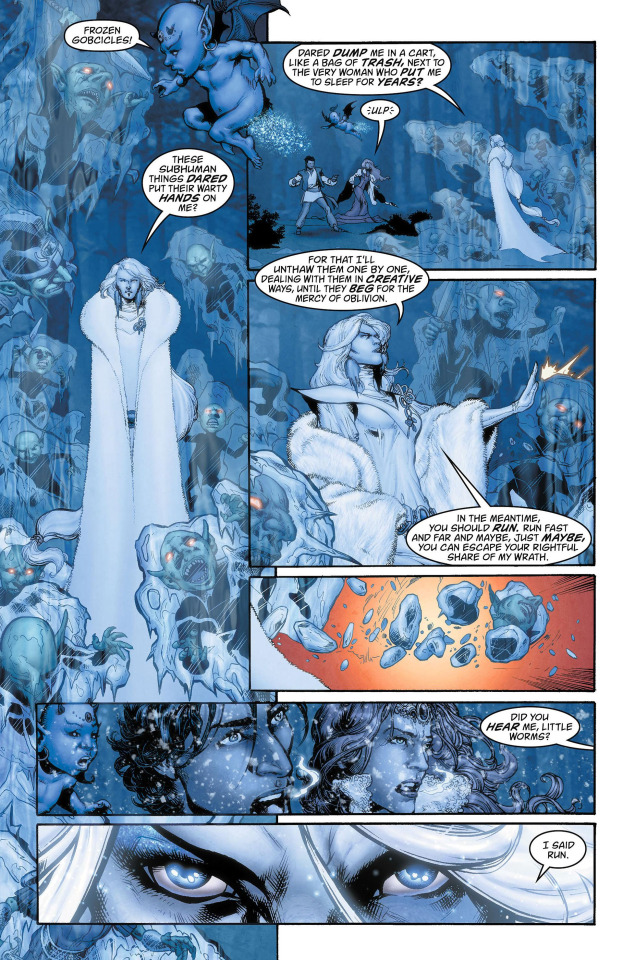
The Hidden Kingdom
# The three movies seen at the theater at the beginning are “Bunny Lake is Missing” ; “Don’t Look Now” and “Picnic at Hanging Rock”. Rapunzel later compares the flying origami attack to Alfred Hitchcock’s “The Birds”.
# This is I think the first time paintings are hidden around in the background. In Rapunzel’s flat there are two pictures on the walls: one is the poster for Kubrick’s “Clockwork Orange”, another is a reproduction of “The Lady of Shalott” by Waterhouse. Frau Totenkinder rather has in her flat Fuseli’s “The Three Witches”.
# Frau Totenkinder here appears mostly in her role of “the witch/adoptive-mother of Rapunzel”. Interestingly however, while Totenkinder is the witch that locked Rapunzel in a tower, and banished her after she slept with the prince, in the Fables continuity of the role of the witch in the Grimm fairytale got split with... the Fairy Godmother, who is revealed to have been the one preventing Rapunzel’s prince from returning to her.
# In the Japanese realm of Fables, the main characters include Mayumi (who is the Kuchisake-onna of Japanese ghost stories), Tomoko (a kitsune), a bakeneko (that just goes by “Neko”) and Katagiri (a kappa). Other supernatural beings coming from “The Hidden Kingdom”, the Japanese Homeland, include: funayûrey (ghosts of the drowned at sea), tanukis, a noppera-bo, a rokurokubi, an oni, an hitotsume-kozo, several kirin...
# When Neko first appears to Rapunzel, he imitates Totoro, from “My Neighbor Totoro”.
# Rapunzel briefly prays to the Jizo Bosatsu.
# Rapunzel, in her numerous travels throughout the Homelands searching for her missing babies, adopted several different identities. In the Hidden Kingdom she was Okiku, the famous Japanese “ghost” in the well. In the Ancient Greece equivalent in the Homelands she also played the role of Theseus, by slaying the Minotaur. And she is noted to have assisted to the “birth of an empire” by seeing twins by a she-wolf: they are Romulus and Remus, the legendary founders of the Roman Empire.
# The treacherous shogun Ryogan actually fulfills the role of both the jealous samurai who mutilated the Kuchisake-onna and the samurai that killed Okiku.
# When the Hyakki Yagyo, the “Night Parade of the One Hundred Demons” is invoked, we also see among the numerous yokai tengus, chochin’obakes, an hebi, the wanyudo, and a nue.
# Jack ends up thrown into the claws of the famous Japanese movie monster, Gdozilla.
# Lauren Beukes, the writer of this arc, listed her several inspirations as: the manga Tekkonkintreet, “The Pillow Book” ; the movies of Kurosawa, Miyazaki and Miike ; the work of the three Murakami (Haruki Murakami, Ryu Murakami and Takashi Murakami) ; “The Tale of Genji”, “Tokyo Vice” (no, not the television series, but the memoir of Jake Adelstein), and “The Illustrated Night Parade of the Hundred Demons”.
Aldered States
# The various suitors of Princess Alder include Mr. Pickles (from “The Magic Fishbone” by Charles Dickens), Trotty Veck (from “The Chimes” by Charles Dickens) as well as Farmer Giles (from Tokkien’s “Farmer Giles of Ham”).
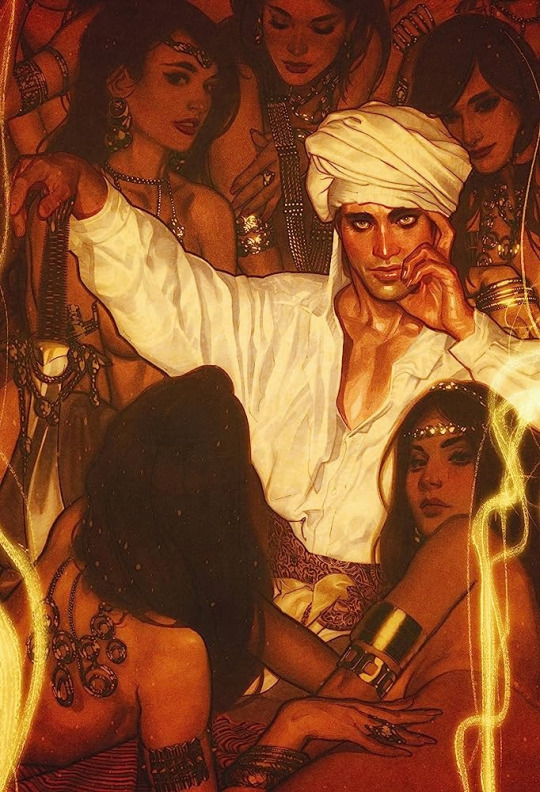
The Return of the Maharaja
# Nalayani is actually the past life of Draupadi, from the Indian epic “Mahabharata”.
# There is a LOT of characters from Rudyard Kipling’s The Jungle Book here: Tabaqui the jackal ; the dholes ; Nathoo ; Buldeo ; Pudmini...
# Prince Charming makes a reference to the “golden ticket”, from Charlie and the Chocolate Factory.
# Among beings from Indian folklore, beliefs, folktales and Hindu mythology/religion we have the asuras, the pishachas, as well as a host of Hindu gods - Rama, Ganesha, Manasa, Kamadhenu, Nandini... The Trishula trident is also important for the ending of the story.
Of Men and Mice
# The very title is a reference to the story “Of Mice and Men” by John Steinbeck.
# The cubs are being read one of the Harry Potter books - Harry Potter and the Chamber of Secrets to be precise.
# At Cinderella’s ball, the transformed mouse ends up seducing Lady Isabelle du Lac, daughter of Lord and Lady du Lac. I wonder if it is a reference to Edmund Dulac...
# I also believe the giant sentient humanoid rat-ninjas might be a reference to “Teenage Mutant Ninja Turtles”.
# The “King’s men” are the same from the nursery rhyme “Humpty Dumpty”.
# Rama is the divine hero of Hindu mythology/religion, while Varuna is... I am a bit confused because to my knowledge Varuna is an Hindu god, not a tiger-headed fish... The only tiger-headed fish I know of is the Japanese Shachihoko... This leaves me confused.
# The Rodgers and Hammerstein’s version of Cinderella is explicitely referenced here.
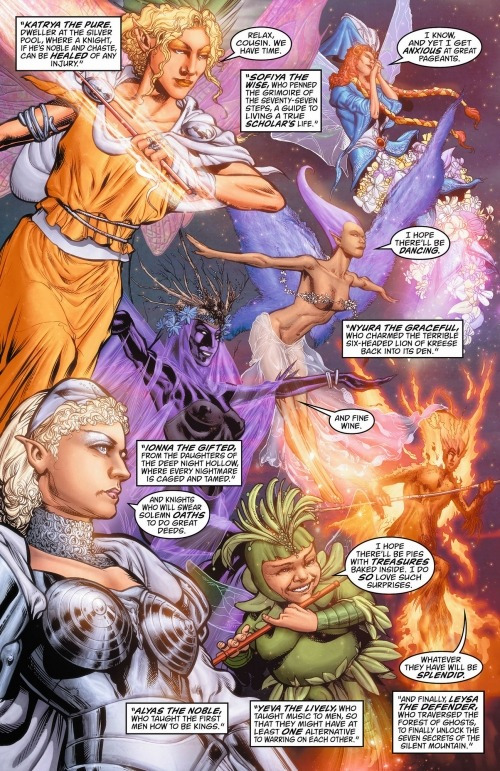
Clamour for Glamour
# Lady Maeve of Dunhollow seems to be Maeve/Mebd of Irish mythology.
# Mary, after losing her little lamb, took up gardening - and thus became the Mary from the nursery rhyme “Mary, Mary, Quite Contrary”.
# There is an entire section of the Farm called André’s Garden, where the Mean Sunflower Kid/Mister Sunflower lives, and we see here five other Fables living in this area: Snapdragon, Old Maid Hollyhock, the Dormouse Juggler, Alderman Poppy, and a woodpecker. Given this is the living area of the Sunflower, and named “André’s garden” I am pretty sure they are meant to be part of this same Victorian book of nursery rhymes written and illustrated by R. André/R. Andre from which the nursery rhyme “Mister Sunflower” comes. The problem is that I cannot have access to this specific book, which seems to not be easily available anywhere, so I cannot actually check...
In case you want to know, I will place here the Mister Sunflower nursery rhyme as it was revealed in the Fables Encyclopedia:
In your dress of brown and yellow
What a stiff-necked
Long legged fellow!
Must you stare, although the bees,
Settle on your face and tease?
Can’t you turn your big flat head
Till the sun has gone to bed?
Fairest in All the Land
# This is where Mrs. Ford was confirmed to be “the old woman at the ford in a river”, the deadly and ghostly “washing woman” from Irish beliefs and folklore.
# While not an exact reference, the seven magical swords kept in the office named after concepts (Mercy, Justice, Regret, Rage, Judgement, Love and Wisdom) are part of a long tradition in fantasy of magical swords with meaningful names (for example, take Tad William’s trilogy “Memory, Sorrow and Thorn”). The powers and nature of Maerorgladi, the Sword of Regret, is especially interesting, as its “hunger” forcing it to take a second life for each kill is clearly inspired by a famous trend of “sentient, soul-hungering swords” in fiction which was started by Poul Anderson’s “The Broken Sword” and Elric of Melniboe’s famous sword, Stormbringer.
# Hautboy/Cendrée, the wizard that created the seven magical sword, is confirmed to have lived in the Dark Tower, from “Childe Roland to the Dark Tower came”, before Roland actually arrived to said tower. The fact his main feats were creating buildings, magical chariots and magical weapons, makes him part of a long line of legendary magical smiths - in Fables, the main series, we already saw Weyland Smith and Daedalus appear, but I can also mention the Greek Hephaestus or the Finnish Ilmarinen. The Ilmarinen comparison is especially interesting, since the mythical ancestor of the evil swords I talked about (Moorcock’s Stormbringer, or Tolkien’s Gurthang) is a sentient, talking sword from the Kalevala. I have however very curious about the names chosen for him, both very French in nature... I think they might have been chosen at random (especially since “Cendrée” is actually the FEMALE form of the adjective “Ashen”/”Cindered”, the proper male form would have been Cendré), but maybe there is some obscure reference I am missing... though I slightly doubt it.
# The topic of “swords that must kill” is also very frequent in Norse sagas: to quote TV Tropes, “Tyrfing of the Saga of Hervor and Heidrek, the sword of Bodvar Bjarki in the Saga of Hrolf Kraki, and Dainsleif from the Prose Edda”. Which brings me to the hero the Sword of Regret was built for, Turgo of Nor, who is the stereotypical “Norse barbarian”. He likes in a world shaped after Ancient Norse society, and he is a muscular, bearded warrior always eating and drinking, but going berserk every time he drinks too much (which is often, since he is a drunkard). However, the fact that he keeps flying into mad rages he then regrets, and that he wears a hood made of animal pelts, make him VERY similar to Herakles of Greek mythology.
# The coat of Padarn Beisrudd is one of the “Thirteen Treasures of Britain”, part of Welsh folklore.
# The Blue Fairy mentions the “Unseelie Midwinter Ball”. The Unseelie Court is one of the two fairy “courts” or fairy “hosts” of Scottish legends, alongside the Seelie.
# I can’t help but wonder if Hadeon’s role as a sentient, magical but malevolent red car isn’t meant to be a nod to Stephen King’s Christine.
#fables#the ultimate catalogue#fairest#cinderella#cinderella from fabletown with love#comic#cultural references#fairytales#myths#folklore#cinderella fables are forever
7 notes
·
View notes
Photo

Frau Totenkinder.
5 notes
·
View notes
Text
LOL!!! XD (A Smile of Day!)
Bigby Wolf has made Frau Totenkinder (witch) as his great Auntie Totty to Japan, and act she hasn’t got much days to live.

LOL!!! But they really are looking for Rapunzel, Joel Crow and Jack Horner
#Bigby#Bigby Wolf#twau bigby#sheriff bigby#wolf among wolves#wolf among us#twau#Fairest#Fairest DC#fairest comic#Frau Totenkinder#Witch Fable#fables comic#Frau#Totenkinder#funny#funny comic
23 notes
·
View notes